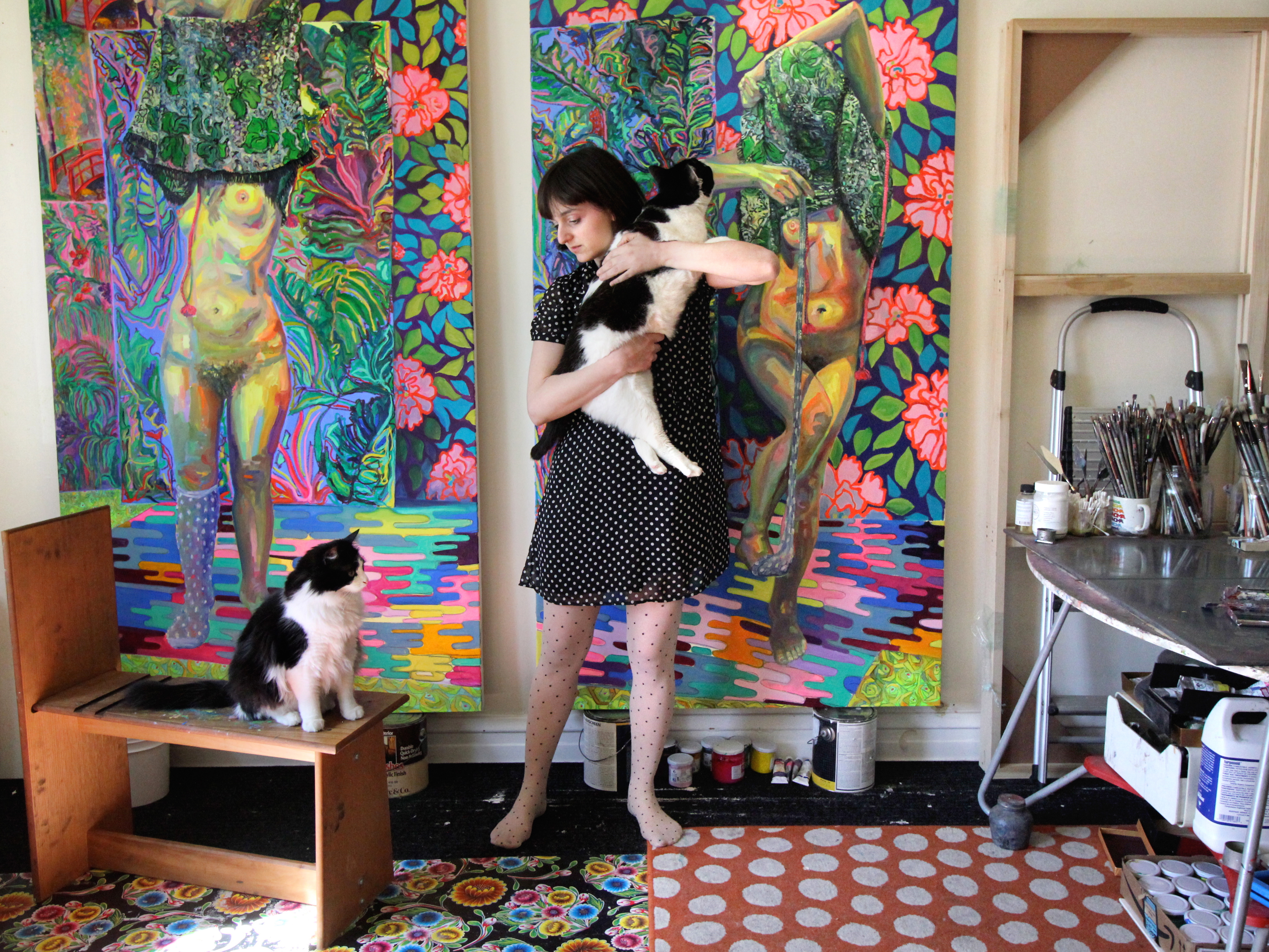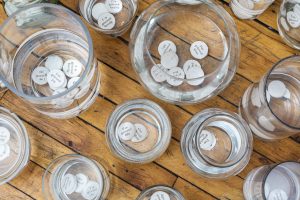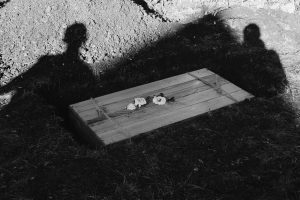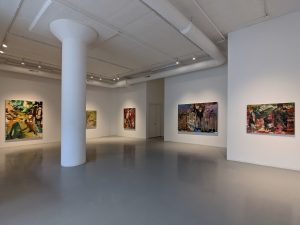“Intimate Justice” looks at the intersection of art and sex and how these actions intertwine to serve as a form of resistance, activism, and dialogue in the Chicago community. For this installment, we talked to Amanda Joy Calobrisi about the confrontation of a body, ending war by lifting skirts, and Boudoir photographs in Amanda’s Pilsen apartment over donuts.
This interview has been edited for length and clarity.
S. Nicole Lane: What brought you to Chicago?
Amanda Joy Calobrisi: I went to SAIC for graduate school. So Charlie and I moved out here for that. It was a big move. It’s scary, to move states. It’s really intense, there’s something of course exciting about it but it’s also kind of scary. And my mom—I grew up with a single parent—so it also felt like I was abandoning my family. That was kind of huge. But once we got here, we were pretty excited to be out of Boston. I don’t think we realized how settled we were there, not because we wanted to be but because it was comfortable.
SNL: Yeah, and the Chicago art scene, how is that? Even specifically in Pilsen where there’s this thriving art scene here with all kinds of DJs, visual artists, performance artists living in this neighborhood, can you maybe talk a little bit about that?
AC: Yeah, when we first moved here, no one we knew lived here. It was actually refreshing to be at SAIC during the day and then get the hell out of there and come back to the neighborhood where everyone was just living their life. We had lots of parties and through having the parties people would come in off the street that also lived in the neighborhood that we didn’t know and so we started having our own little community within a community, which was really exciting. A lot of performance artists, that were either graduates from SAIC or dropouts of SAIC.
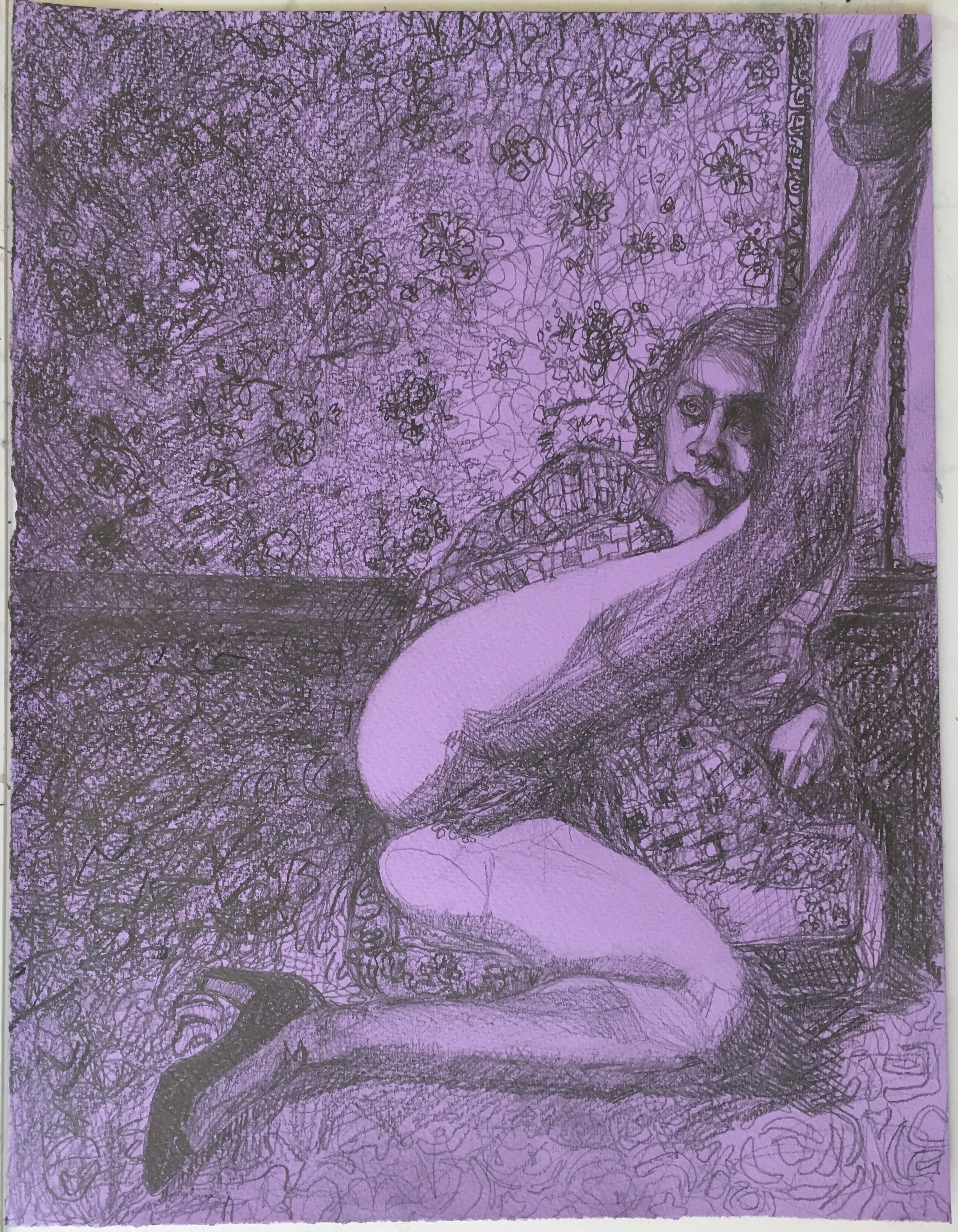
There was a good three or four years where I was doing a lot of portraits of performance artists and artists that live in the neighborhood. That was cool, that was a good way to sort of cross pollinate and get to know somebody and then they would invite me to do things with them, either performative things or what have you. I had a very brief phase of trying to get out of my being a painter in isolation [laughs] and I was like “Hmm.. Maybe.” I had been reading a little bit about Butoh and researching about Butoh and I realized that there was this dance organization called Blushing Poppy. I did some Butoh workshops and worked through thinking about my body in that way because I was doing a lot of self portraiture at the time and I kind of wanted to open up and make the poses more interesting and dynamic and maybe this kind of expressive dance could bring me there. And so I did that for a little while and I met a lot of performance artists and they almost all happened to live here. So there were all these sort of threads that were connecting through all kinds of things. Yeah it was a really exciting time, I don’t think it exists anymore, I don’t know why, it could just be a changing of the guard. It could be happening for somebody else in some other group now.
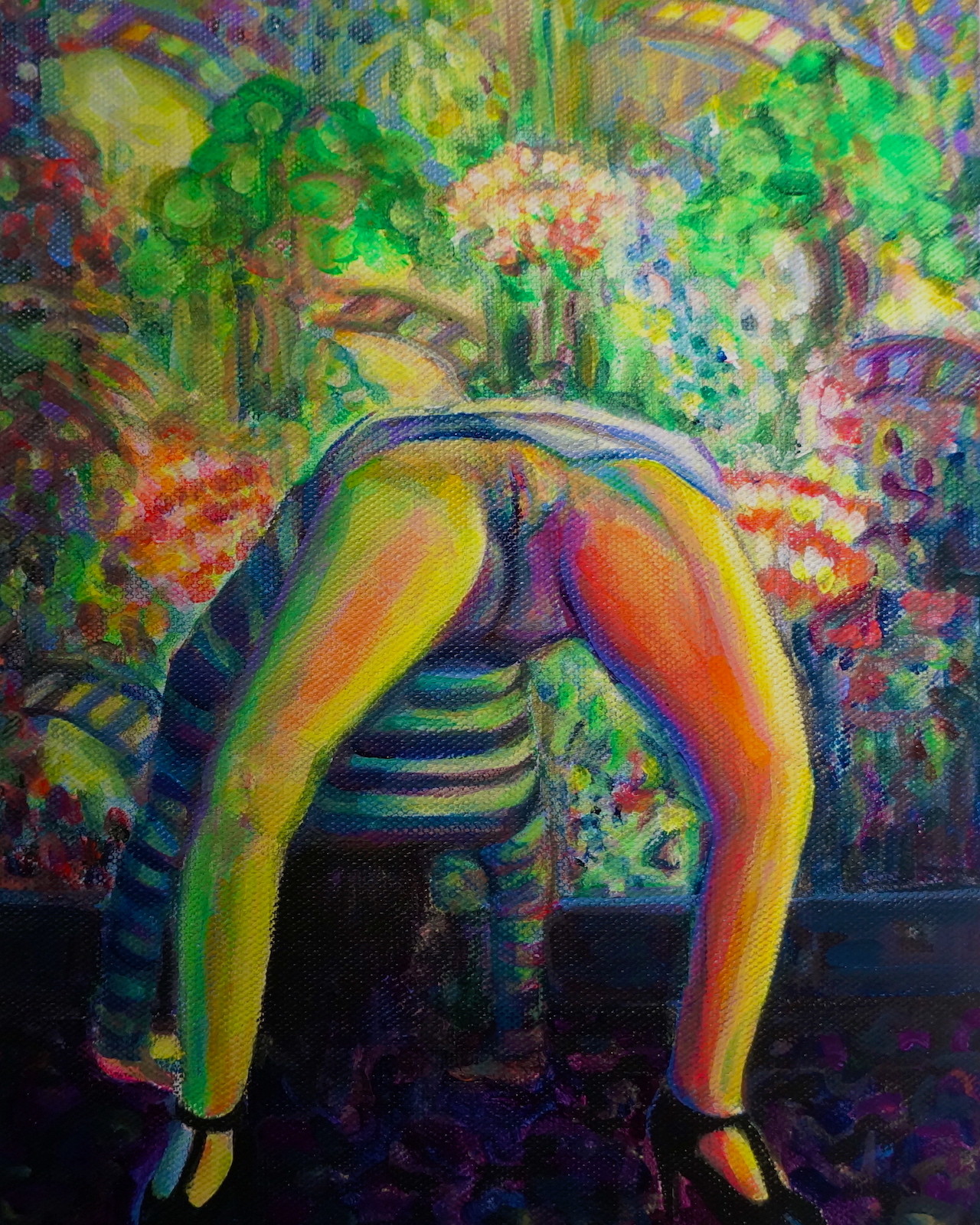
Most of our friends have moved either west, or elsewhere, because the rents are getting a little bit too high. I don’t feel that same connection to the neighborhood anymore. I still love it, and we keep moving a little bit west too just to kind of stay out of the restaurant/bar traffic cause that’s not really why we moved here, we moved here for space, and there’s less and less affordable space.
SNL: Did you say that these specific pieces I’m looking at are self-portraits?
AC: Yeah I did say that, and I’ve been actually thinking like, how important is that to these paintings? Because really they’re poem paintings.
I went to Japan three summers ago and I started thinking a lot about feminism and how it’s maybe different in Japan than it sort of evolved over time here in the United States. I didn’t really know what that meant but it was just something I was thinking while I was there. I was observing in this really rural town this feeling that, and this could be just the town not Japan the whole country, but in this town I was feeling that there was real machismo with the men and this disregard for women. It was just a thing that I noticed, I wasn’t there that long but the community was run by these politicians that interacted with people at the residency. They seemed really sexist and I didn’t participate with a lot of the things going on at the residency because I didn’t really like being looked at like a piece of meat and I didn’t like the way they were looking at some of the more voluptuous women that were at the residency that they weren’t so used to encountering. And it made me think, what is feminism in Japan? What does that mean?
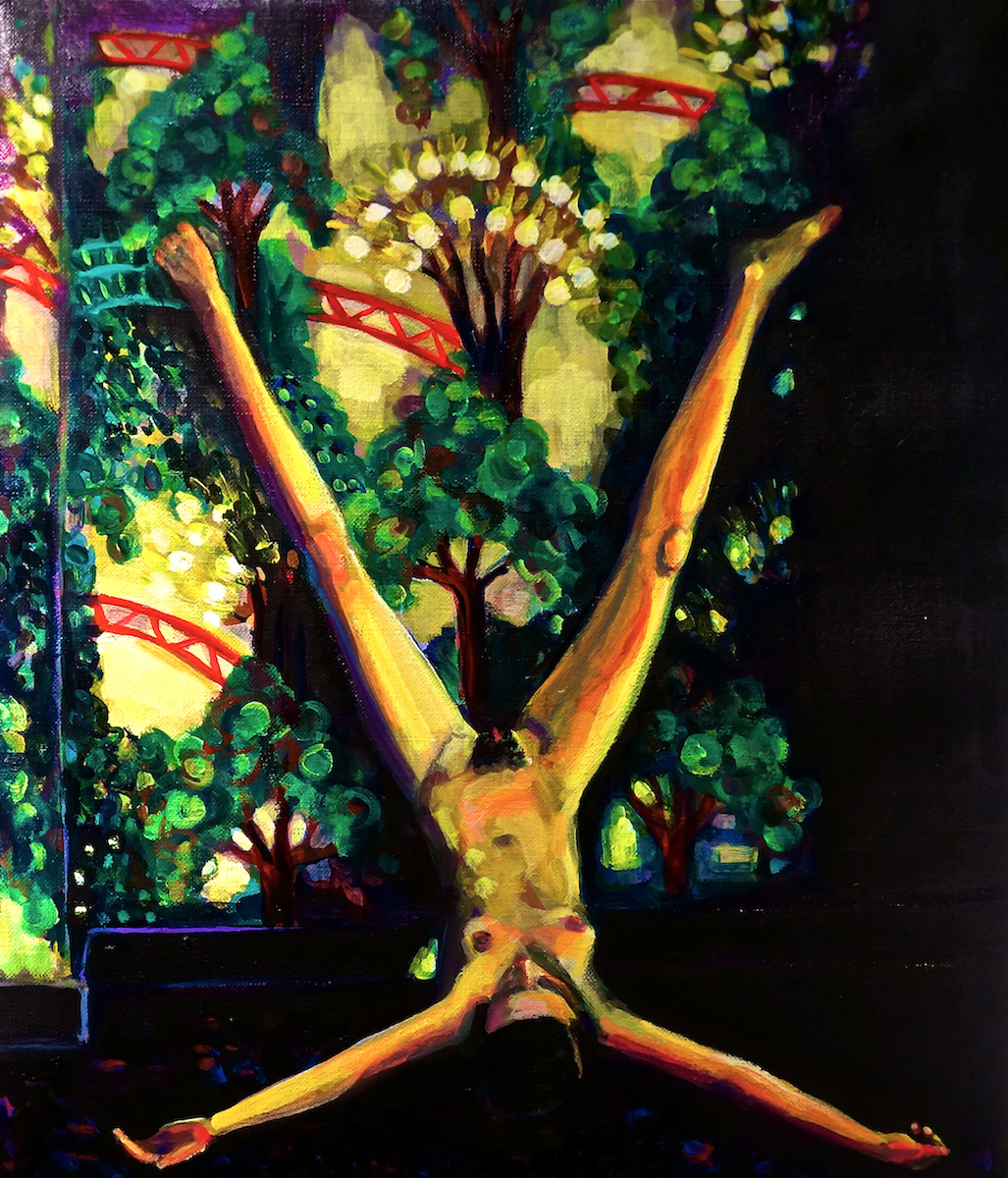
I headed to the library and I discovered literally on the first page of this book [laughing] that was like “Feminism in Japan.” I had to start basic because I had no idea. And so on the first page, I opened it up, there was this beautiful poem by Akiko Yosano and I was just like, “What! This feels like fate that I bumped into this poem.” Instead of really going deep into my research about feminism in Japan—I maybe read half of the book [laughs]—I learned a lot about the blue stocking movement which happened in the early 1900s that Akiko Yosano participated in up until a point. I started looking for translations of her poems which there weren’t that many of them. I bought up everything that I could get my hands on and started just researching her and reading her poetry and reading the translations.
When I went back to Japan for the second time, this past summer, I went there wanting to make paintings based on her poetry. It’s actually really hard to make a painting based on a poem. Because the poems are sort of pictures of nature and in that nature you discover something about the authors sensuality or sexuality and then you discover something about your own. It’s like, whoever’s translating this Tanka poem, which is the type of poetry she [Yosano] wrote, is imbuing it with how they’re translating the language and how they’re perceiving the poem so there were translations that were super feminist and there were translations that were super sexist [laughs] and everything in between.
SNL: Did you work with self-portraits before this?
AC: Pretty much as a young artist, undergrad, I only did self portraits. I knew I wanted to work within the realm of womanhood and so I thought, “Well I’m not even brave enough to ask other people to pose for me because I’m still learning how to draw and paint” and so it took off the fear of failure to just use myself until after grad school.
SNL: You’re in control of the posing and how it’s executed.
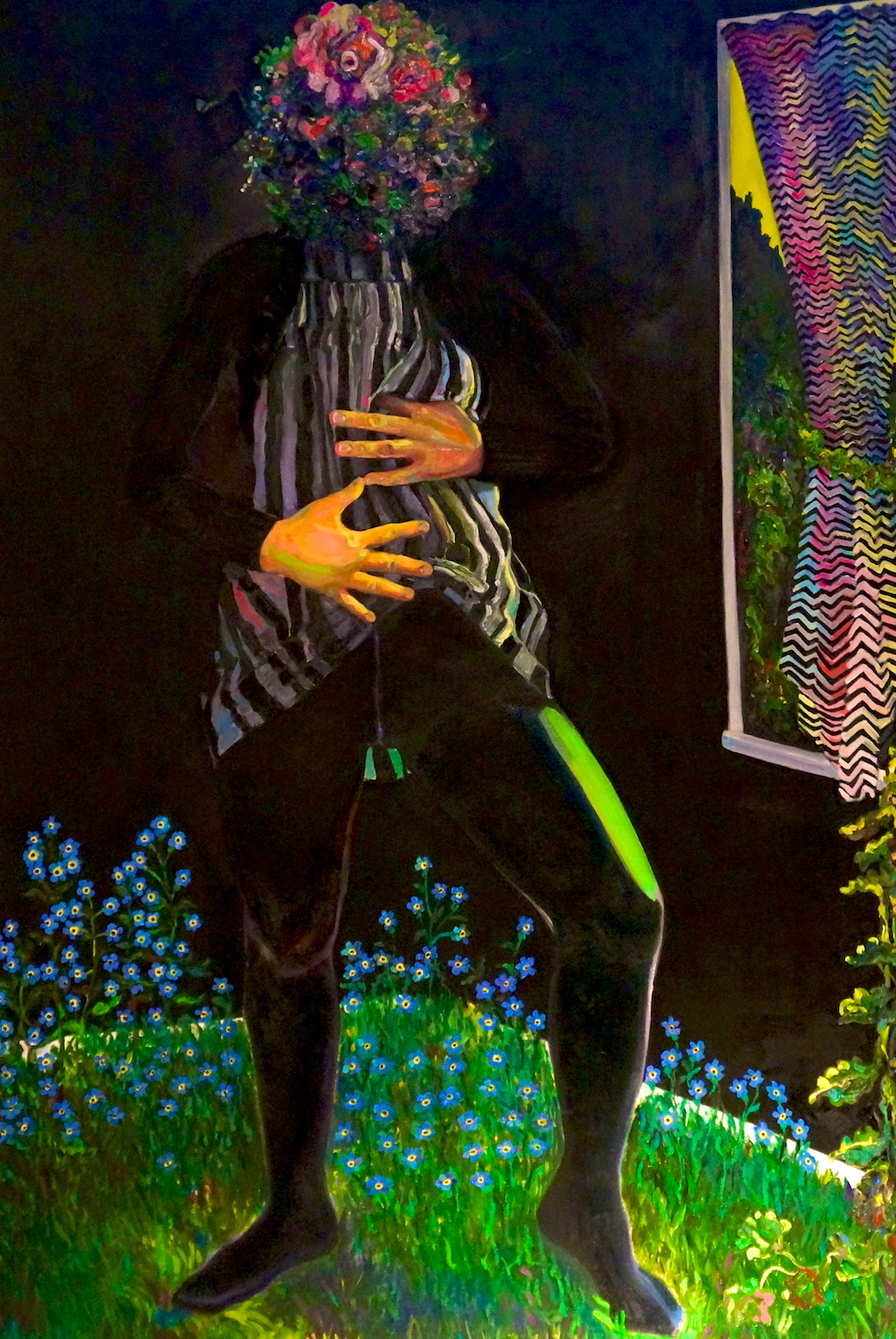
AC: You’re on your own schedule too. Once I started meeting this circle of friends and taking these Butoh classes and feeling a little bit like a different self than I was. Maybe I was a little bit more extroverted than I thought. I thought it would be a good time to start painting other people, and plus I had really become more confident about my skill as a painter, and I could decide and control what I wanted to portray, like how much likeness.
I did portraits of everybody that was around me. It was interesting too because people are so flattered to be asked to be in a painting and it sort of forms this intimate bond that’s really hard I think. Especially now because you meet so many people and are friends with them on Facebook or follow them on Instagram and there is this sense of knowing something about each other but there isn’t much intimacy.
SNL: How are you continuing to cope since our current political administration was elected? Do you have any thoughts about that?
AC: It’s funny because at the time I was at BOLT working on this series of paintings, some of them are on the wall, that come from photographs by this photographer who called himself Monsieur X. They’re basically Boudoir photos gone wrong [laughs], that’s the way I think about them. But he was a paying customer at this brothel in Paris in the mid ‘20s to the late ‘30s and he used his time to photograph women. I’m still currently working on paintings from these photographs and they’re really awkward and they’re not typically erotic. That’s kind of where I was, in my thinking, when it all happened.
I think my work has always taken female sexuality as matter of fact. Not as something that I want to even necessarily highlight or bring to the forefront, it’s just there. So has that amped up or something since the election? I don’t know. I think there’s maybe a slightly more sadness in all the paintings since. This feeling of hopelessness is always an undercurrent in all the work that I’m attracted to. I think the political climate right now is stifling, you almost feel asphyxiated by the news, by talking about the news.
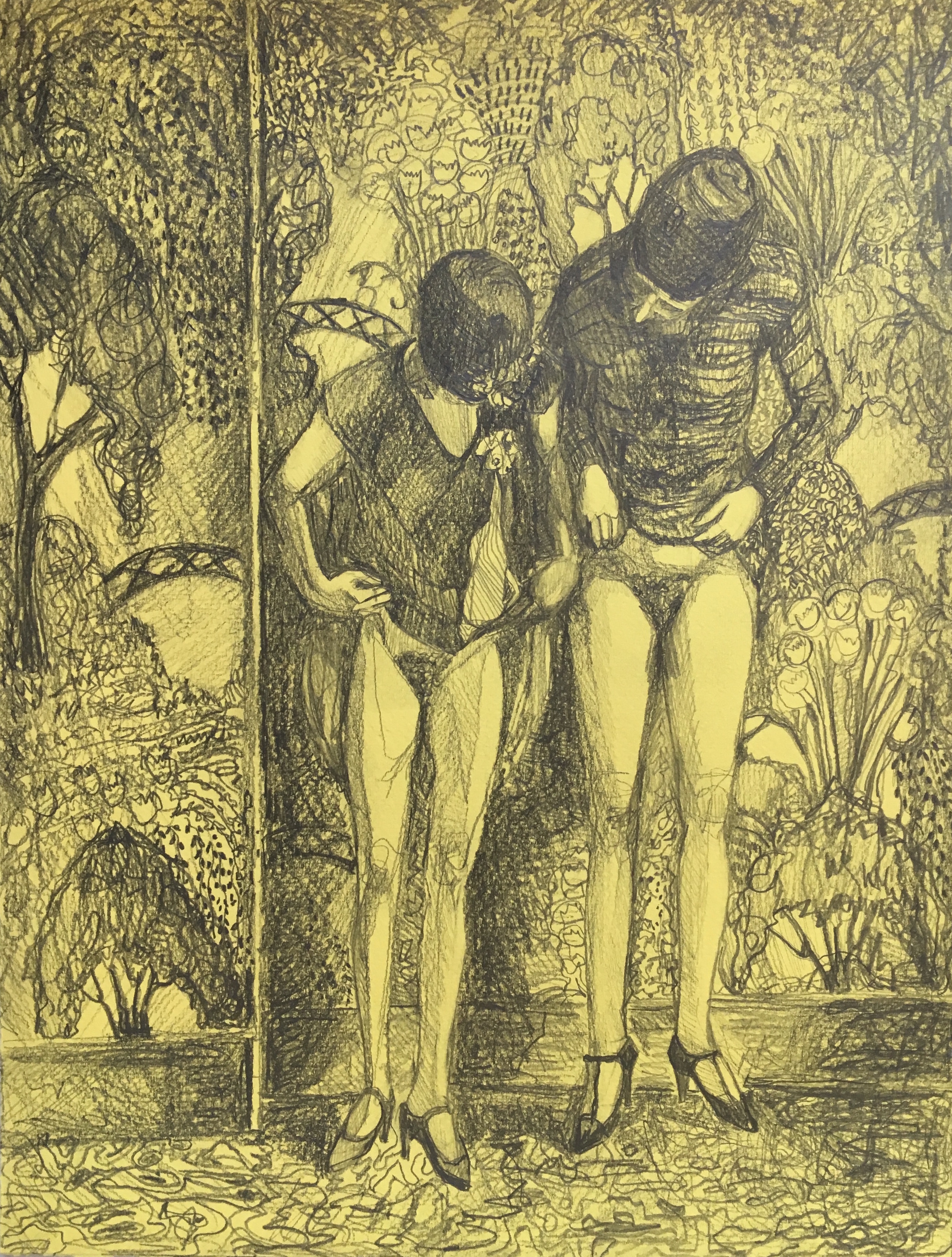
SNL: Yeah it’s just very overwhelming. I interviewed an artist before you, Jeanne Donegan, and she had this interesting illustration in her studio of a woman lifting up her skirt and then I guess it was supposed to be Satan or some sort of demon—
AC: —Oh yeah Balbo, that’s her name.
SNL: Yeah, an image of figures lifting up their skirts. Yeah, can you talk about what that pose means to you?
AC: Yeah so it’s actually a very ancient pose, and it sort of changed forms over time. I’ve been learning a lot about it over the last few years but it was something that I just kind of bumped into. It’s a very ancient pose called, Anasyrma. There’s this great book called “Sacred Display” where the two writers are collecting artifacts, sculptures, ceramics, paintings, everything, from around the world that have what they call a sacred display—so this lifting of skirts—but I bumped into it on the internet. I had found this image of three women lifting their skirts, it was a Boudoir photo but there was something really hokey and wonkey and weird about it and I did a painting of it.
It kind of led me on a search of images of women lifting their skirts that weren’t quite erotic but there was something else about it. In this photograph the women looked like they were checking out each other’s pubic hair [laughs], like “Yeah that’s how you do it,” and I really liked that I thought that was kind of funny because we’re always like wondering about other people, things we can’t see on the outside, like how do you find out more. Again, I think it kind of comes back to this thing with friendship where you’re trying to create intimate relationships and it’s hard. I just wanted more images to work from that weren’t erotic in this really straight forward way, of women lifting up their skirts, and I came across this sculpture, ancient greek sculpture, and it was a woman lifting up her skirt and looking down and she had a penis. And I was like “What! This is great. Is this real? Is this an actual ancient thing?” And it is, and there are others, where they have breasts and female characteristics like long hair or whatever but they have penises. That’s when I saw the Balbo image that you’re talking about.
At that point there’s no longer this sacred quality or apotropaic kind of quality of lifting the skirt. Now they’re kind of making fun of women’s genitalia, and she’s sort of more showing her butt to the devil but it comes from ancient belief that when women lifted their skirts they could stop wars, they could protect their property, they could allow their crops to grow, they could create rain. It’s coming from that but now it’s starting to shift to women don’t have that power, it’s no longer powerful protection, it’s still keeping the devil away but there’s sort of this erotic element to it that’s saying it’s something to kind of laugh about or make fun of.
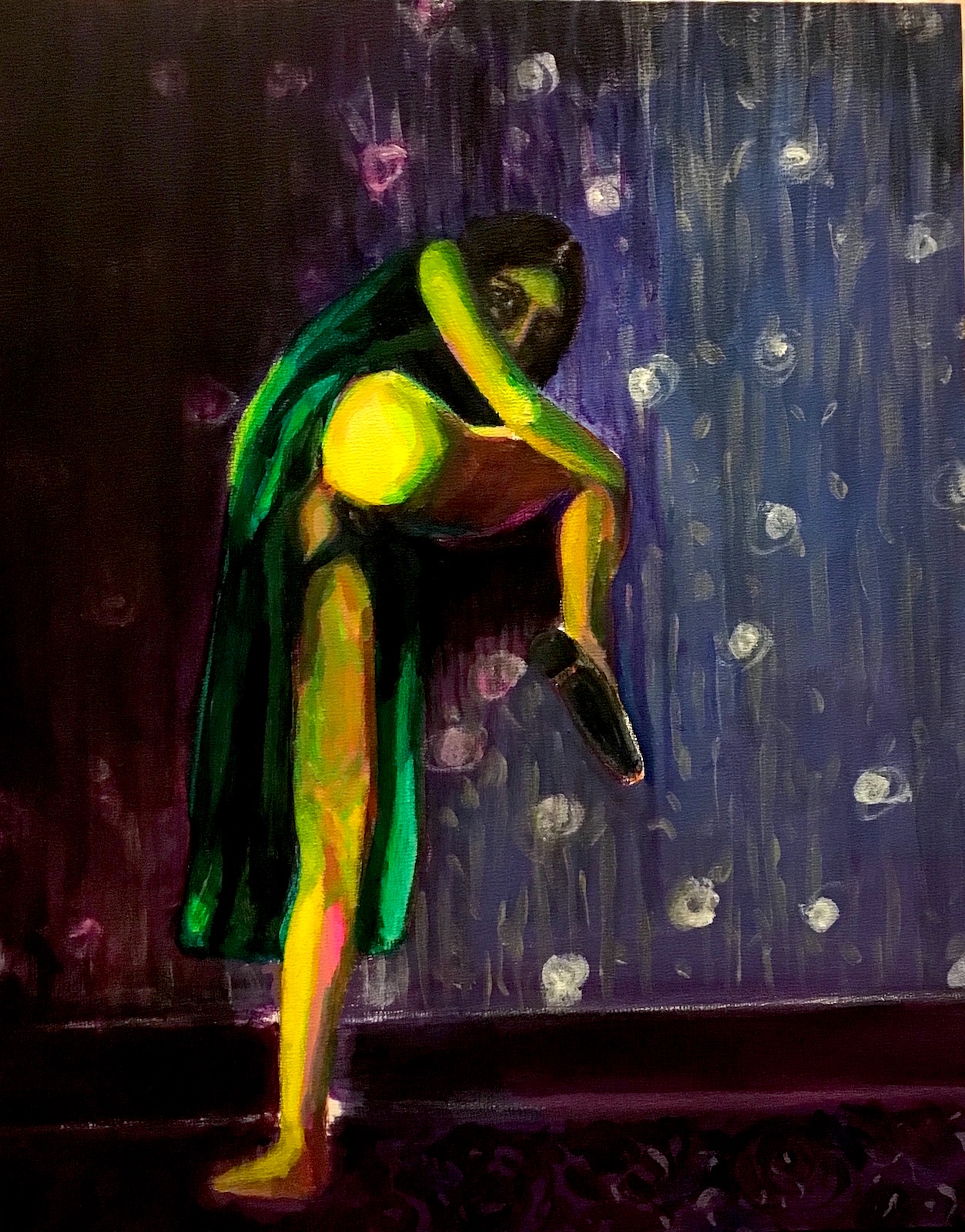
SNL: Yeah I’ve definitely seen it before and I’ve always found it really interesting.
AC: I just like how it turns everything on its head because the thing that drew me toMonsieur X is that the Boudoir photos were just so weird and not what you expect from Boudoir photographs. These women just looked bored and daydreaming or if there were more than one woman, playing with each other, making fun of the photographer. There was all of this narrative stuff in it that shouldn’t be there if it is supposed to be a Boudoir photo. That’s really interesting to me as a painter, having nudity but confusing the viewer with it, like this isn’t how I usually am confronted by a body.
SNL: Right and your work is so colorful but then that one is really haunting. Could you also talk about how vibrant your work is? And the texture, yeah especially there, they’re layered with so many different—
AC: Yeah they’re kind of chaotic right now. Simply put I guess, I worked in a vintage clothing store when I was younger in Boston and I was always attracted to color. But it sort of gelled when I was working there and the colors especially of Kimono and ‘60s mod stuff.
I think I’ve always been interested in color but I think it took a while as a painter to be able to get color to do what I wanted it to do.
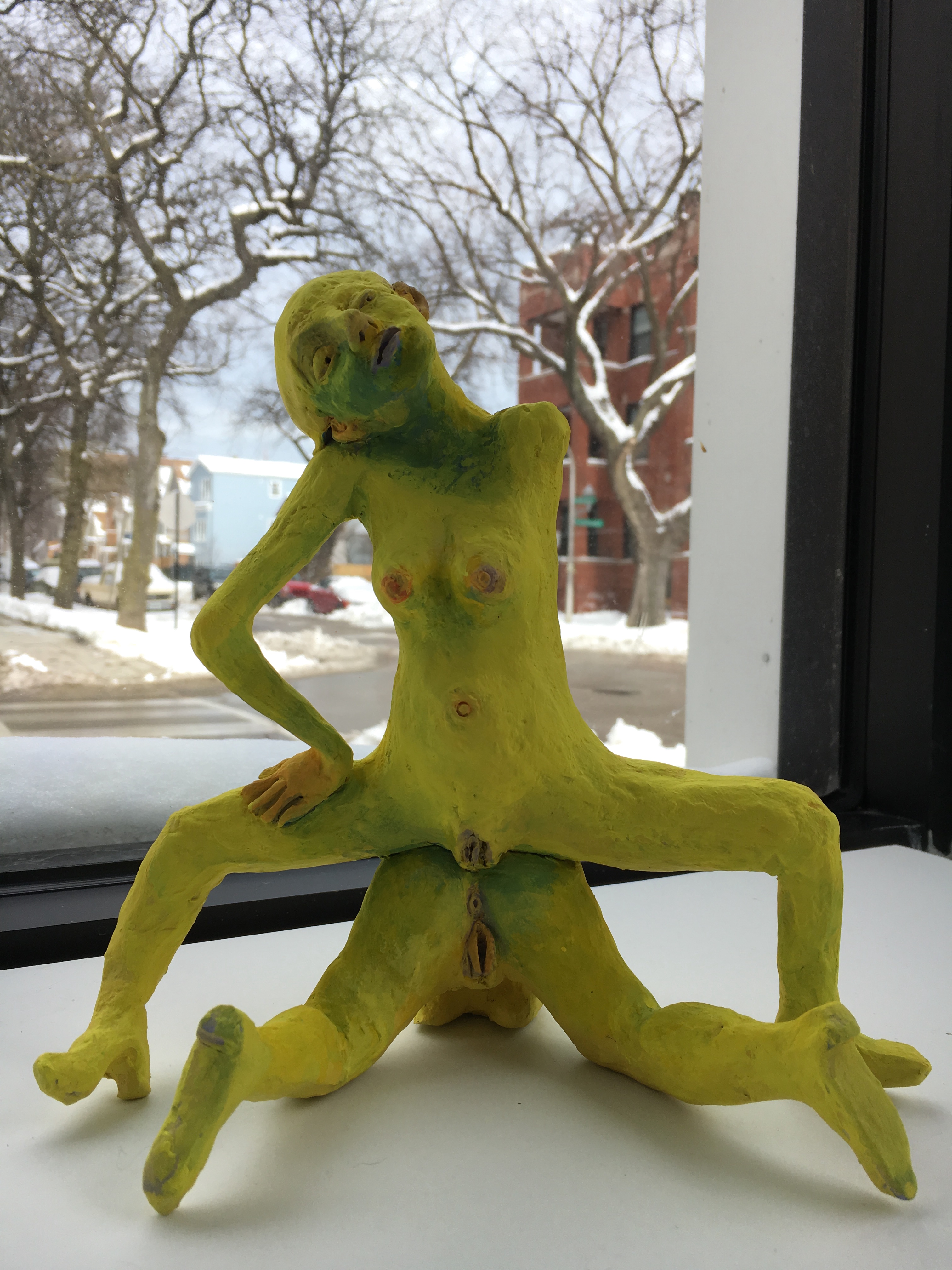
SNL: You also make sculptures right? Do you want to talk about those a little bit? Like when you started working on them?
AC: The sculptures I started three years ago, so the year before I went to Japan the first time. I think they were sort of another moment where I felt like where I’m really stuck in some habitual moves in the paintings so something has to come in and shake it up to sort of reinvigorate it.
I’m always inspired when I see female figurines, ancient figurines and that might’ve given me the idea to try clay but I knew I didn’t really feel like taking a class somewhere and doing it that way. I started researching materials and found this air dry clay called Amaco air dry clay. Some of them were just like straight forward kind of reproductions of the forms and then they dried and I was like now what do I do with them? So I had some acrylic flash paint which is like a matte acrylic paint and I started painting them. Do you know Nikki St. Phalle?
SNL: No.
AC: [laughs] They look so much like her work that I was like, “Wait this isn’t really me, this is somebody else.” And they’re a little stranger and maybe kind of cutesy but they weren’t really me, because you’re just working through a new material.
They started becoming my work when I started making these unexpected mothers. I started creating these figures with babies popping out [laughs] and I called them “Unexpecting Mothers,” so some of them are in weird yoga poses and there’s a baby flying out [laughs]. So yeah, I’ve just kind of been moving forward with the sculpture.
I never really worked in the round. So now I have to think about what something looks like from all sides. Which I think has actually helped the paintings a lot, to think in the three dimensions. So when I return to the paintings I’m thinking about what it looks like from the other side and I don’t know it just kind of brought a different touch to the paintings. I have so many bodies of work happening right now, it’s kind of wild. I feel like for a while I would just work on two big paintings and that was just kind of it and now there’s sculpture, there’s the small paintings, there’s the big paintings and then there are these stretch paper paintings I’ve been doing with graphite and watercolor.
I work all the time if I can ya know, and sometimes you can’t.
Featured Image: Studio Portrait, Photo by Charles E. Robert III. The artist is standing in front of two self portraits in her studio. She is holding ”e” black and white cat (Lucien), wearing a dress, and gazing down at her other cat (Charlotte) who is sitting on a drawing bench.
 S. Nicole Lane is a visual artist and writer based in the South Side. Her work can be found on Playboy, Broadly, Rewire, SELF, and other corners of the internet, where she discusses sexual health, wellness, and the arts. Follow her on Twitter.
S. Nicole Lane is a visual artist and writer based in the South Side. Her work can be found on Playboy, Broadly, Rewire, SELF, and other corners of the internet, where she discusses sexual health, wellness, and the arts. Follow her on Twitter.
Photo by Devon Lowman.
